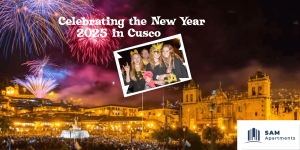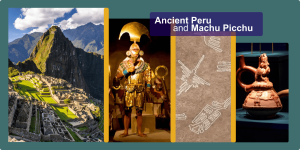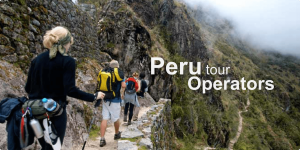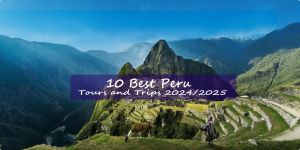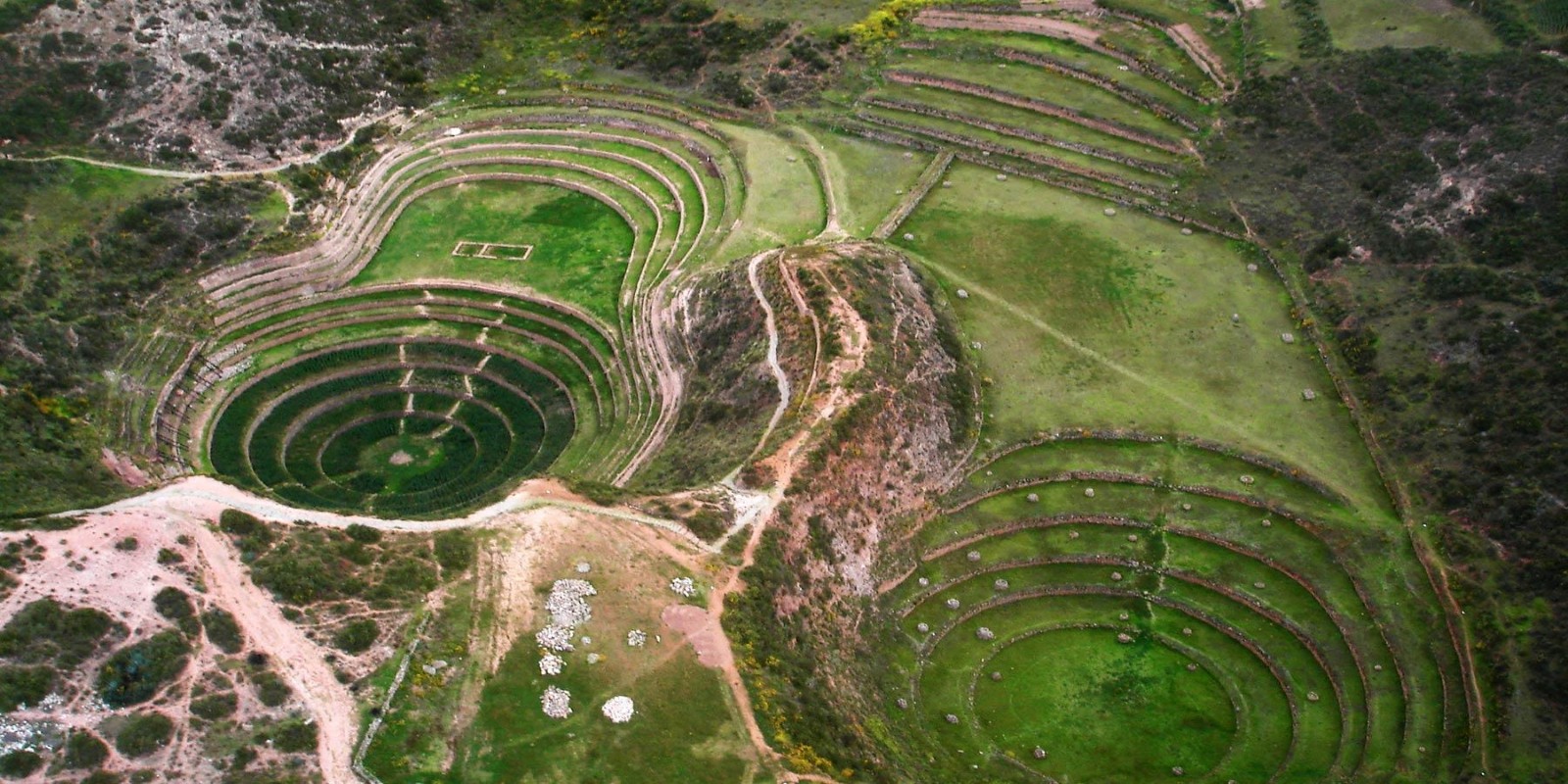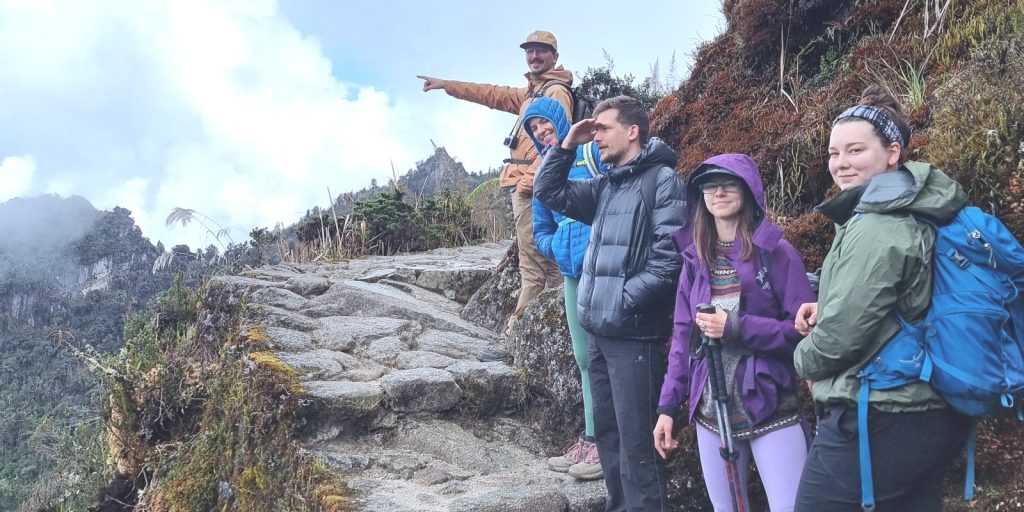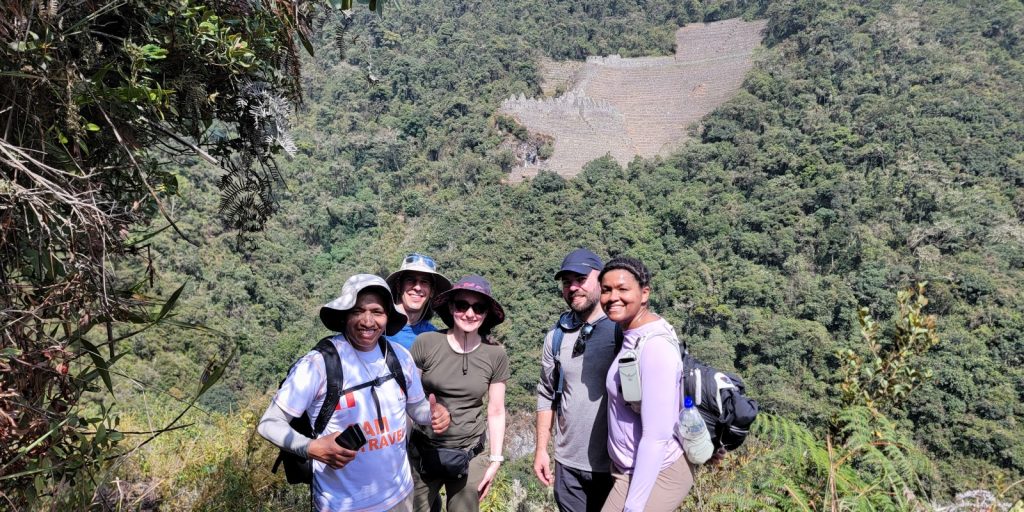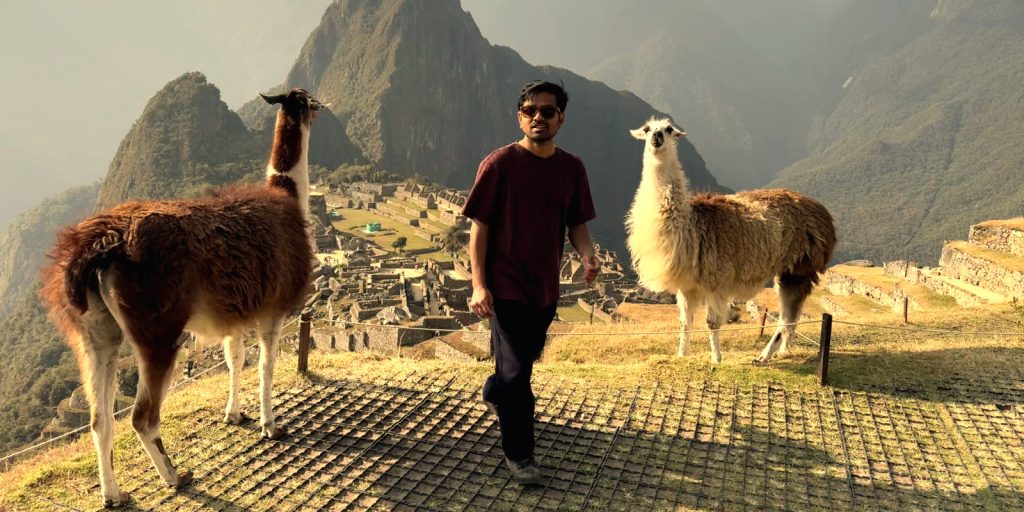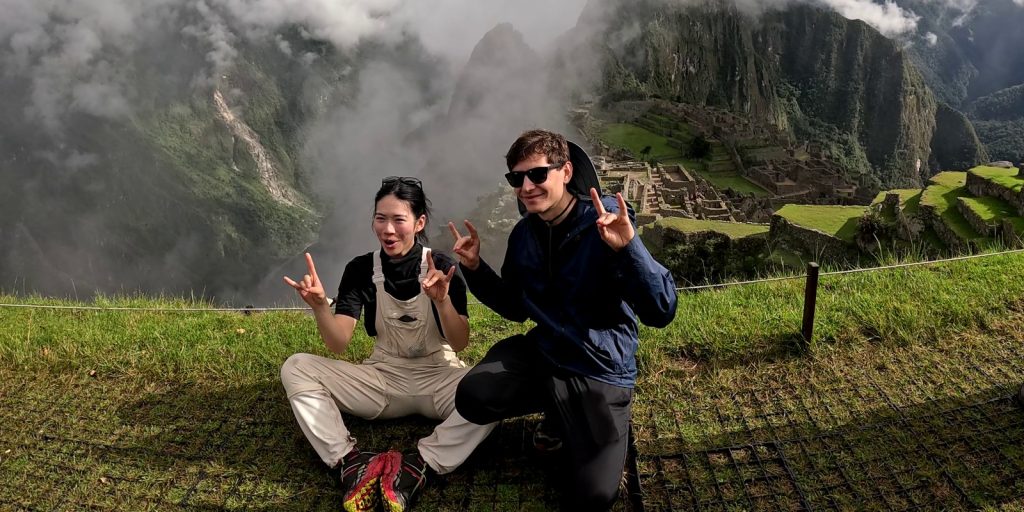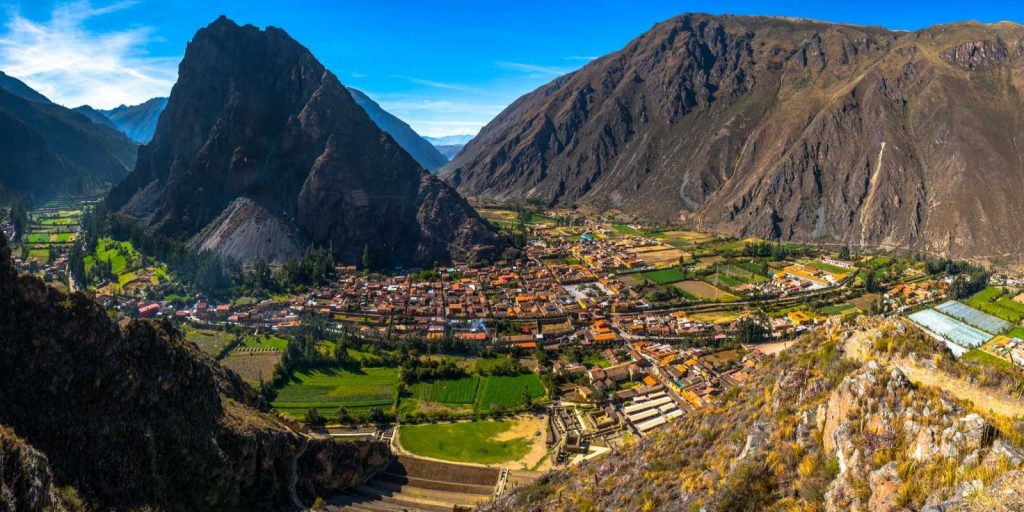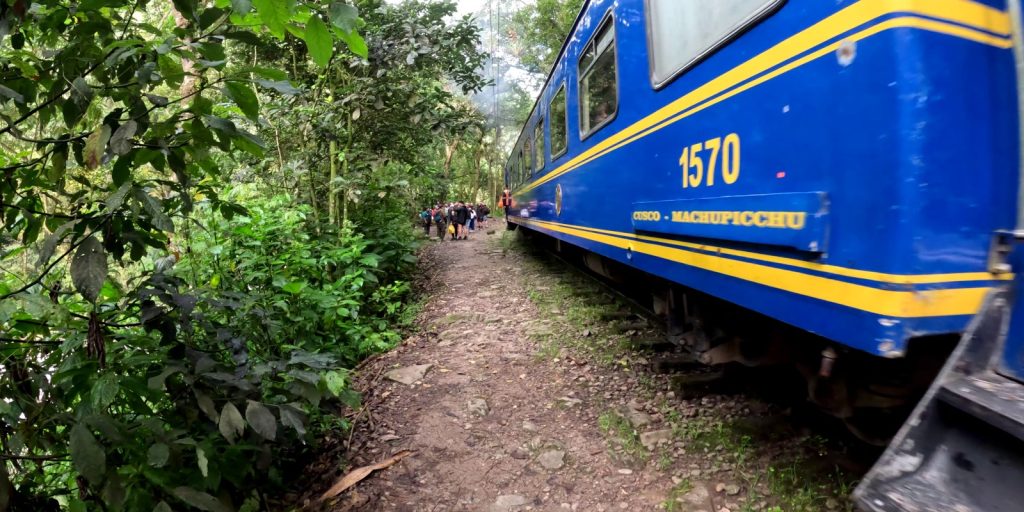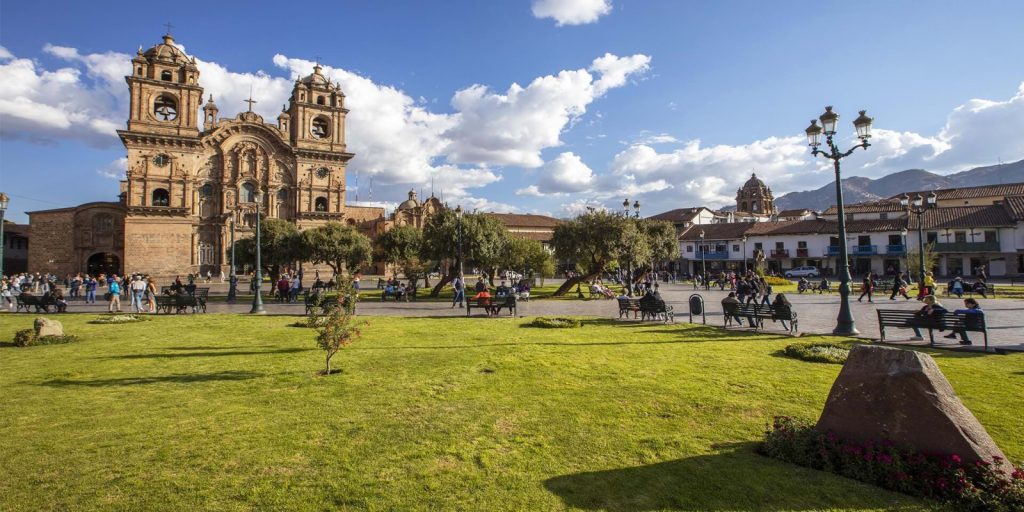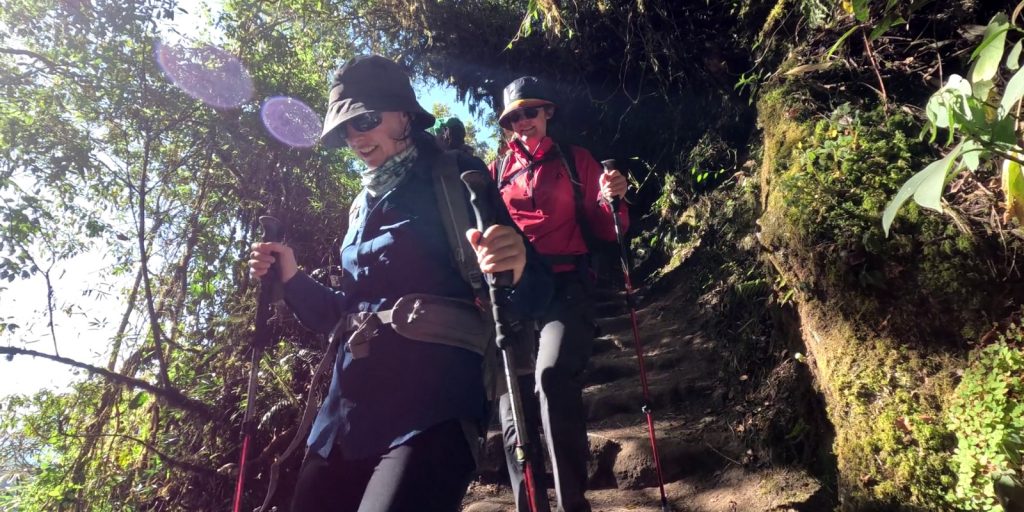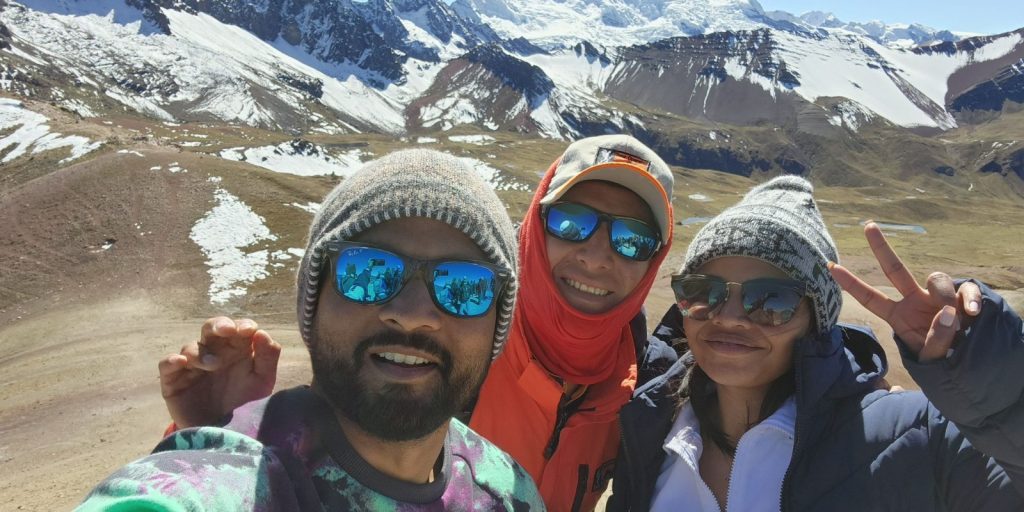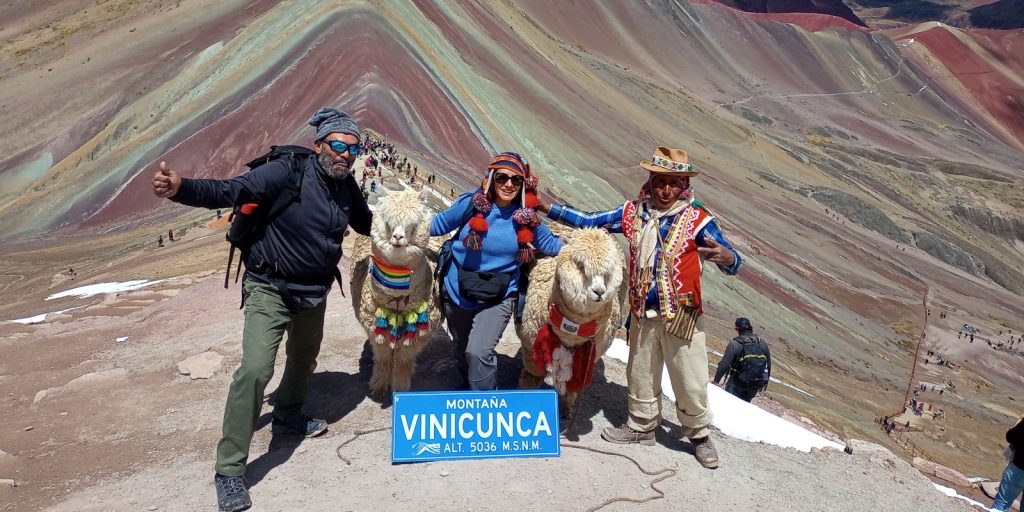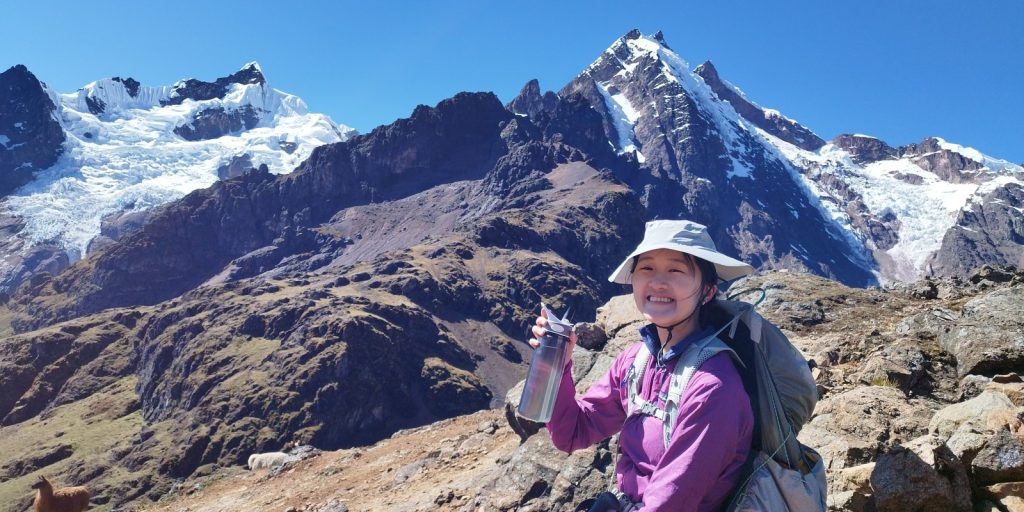Surrounded by the spectacular Andes Mountain, not far from Cusco is the ancient site of Moray, an interesting stop on any Sacred Valley tour. Shrouded in mystery the site was used until recently as farming by the locals. Today Moray is open for tourists to visit and hear the fascinating versions of the history of Moray.
History
Evidence from the site suggest that the lower six terraces at Moray may have been built by a previous culture before the Inca, archeologist think that it was the Wari culture that lived from the 6th to the 10th Centuries.
Now archeologist believe that the Inca empires finished the site in the 12th to the 14th centuries. The Inca culture brought products from all over the Tahuantinsuyo territory for the purpose of planting them in the fertile land of Moray, scientist have found evidence of soils here from different regions in Peru.
According to historians, these constructions constituted an important agricultural laboratory of the Inca empire. The terraces are built with their respective irrigation canals and each of them has their own microclimate. What we find most fascinating is the great difference in temperature between the top and the bottom of the terraces, a difference that can reach up to 15°C.
With the arrival of the Spanish, Moray was abandoned, it was not until 1932 that it was discovered by archeologists who flew over the site, finding it full of vegetation. The same aerial expedition team that found the Nazca Lines discovered Moray. It was still used by farmers until the 1970s when the National Institute of Culture took control of the site and now it is used for tourism.
Purpose
Agricultural Research
Most believe that the Moray site was an experimental farm used by the Inca, 500 years ago, the ruin features circular terraces engineered by the Inca with an advance irrigation system which was a series of channels fed by reservoir located high in the mountains above the site. Archeologists noticed that the temperature difference from the top to the bottom was an astonishing 27 degrees Fahrenheit. Also, that the sun hit each terrace at different angles and intensities.
The terraces at Moray have their own microclimate. This allowed the Incas to study the effects of altitude, temperature and sun absorption on crop growth to determine niches suitable for crops to thrive. This experimentation allowed for the Incas to teach neighboring regions agricultural techniques for best crop production despite the differing altitudes and climates throughout the Andes and Peru.
Inca Ceremonial Center
Locals from the nearby communities tell stories that date back to Inca times of celebrations and ceremonies being held at Moray. While it is likely that Moray was used as an amphitheater for ceremonial purposes, it seems improbable that this was its sole purpose due to its remote location far from Cusco city, at that time the heart of the Inca Empire.
Open Pit Mine
A significant amount of excavation was needed to construct the Moray ruins in such a beautiful and symmetrical way. One theory about the site is that it was once an open-pit mine used by Incan or pre-Incan cultures. After the mine had been depleted, it was then covered by terraces and repurposed for Incan farming and ceremonial uses.
Alien Landing Site
Another popular theory about the Moray ruins is that the circular depressions in the earth are crop circles, or marks left behind by aliens from a UFO landing.
What is Moray?
The little-known Moray is an Inca ruin not far from Cusco. It is composed of three groups of circular terraces that descend 490 feet (150 meters) from the highest terrace to the lowest. Each terrace has 12 levels of terraces with the largest having a diameter of 600-feet. Surrounded by the towering Andes mountains, these terraces will fill you with questions as to why they were built.
How to get there?
The easiest option to get to Moray is to book a tour with a tour operator/agency. If you want you can also go by taxi from the Sacred Valley, although it would be a rather expensive option up to 80 soles each way. Make sure you agree on the price before you leave and ensure that the driver waits for you as there are no taxis at the site. You can even take the adventurous option and go by bike from Chincheros. But if you are looking for a guide to accompany you, you will have to take the first option of booking a tour.
What you can see around Moray?
Maras
The salt mines near Moray are salt-encrusted ponds that look like a blanket of snow covering the mountainside at a distance. But as you get closer, each of the 3,000 plus ponds takes on various shades of white or tan from the differing levels of saltwater. Maras’s salt has been harvested since pre-Inca times and today local families run the site and live from the sale of the salt. Travelers are invited to see this centuries-old tradition at work.
Horseback Riding
If you like horses, then you are going to love a horseback riding adventure tour to Moray, Maras, and other nearby highlights. It’s an easy trail so riders with little or no experience will not have a problem. Start in the Andean community of Picsuyo in the Sacred Valley. Here you will meet your horse and begin the uphill 1-hour ride to the highest point in the trail. Soak up views of the snow-clad peaks of Pitusiray, Chicon and Veronica peaks.
Mountain Biking & ATV tours
The dirt trails travelling the open landscapes of the Sacred Valley are an outdoor enthusiast’s dream. One of the most exciting mountain biking and quad biking routes goes from Maras to Moray. After an hour’s car ride from Cusco to Chinchero, suit up for the ride of your life. Moray is the first stop, and then Maras. Your guide will help you through each of the sites and keep you safe along the way.
Weather and Altitude
The Moray ruins are at the edge of the Sacred Valley, not far from Cusco City. The region where Moray resides experiences fairly constant temperatures throughout the year. Temperatures during the day are warmer and average between 65-70 F (18-21C). Average night temperatures range between 30-50 F (1-8 C).
The Cusco region has 2 seasons throughout the year. The dry season is from April to October. Days are usually sunny with low chances of rain. Temperatures really drop at night, so make sure to bring a jacket.
Rainy season is from November to March. During this time, the region receives regular rainfall. Mornings are generally cloudy with light showers and afternoons and evenings can bring heavier rains. Average daytime temperatures are typically mild, but you’ll still need that warm jacket at night.
Moray is located on a high-altitude plateau northwest of Cusco at an elevation of 11,500ft (3,500 m) above sea level.
Moray is one of the Incas great mysteries, set in the heart of the Andes, the surrounds and scenery will take your breath away. Learn about how the Inca experimented with soil and crops to extend their knowledge. Take the opportunity to see Moray an Inca Garden Experiment.
